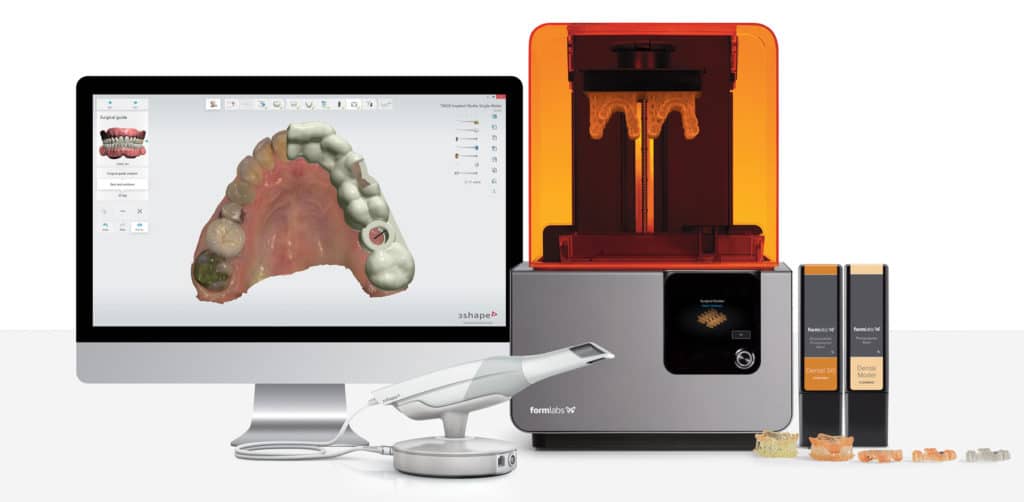ROLE OF DENTAL IMPLANTS
Dental implants are an excellent method of restoring lost teeth, but to get the best results, we need to ensure they are placed properly in the mouth.
DIGITAL IMPLANT POST INSTALLATION SURGERY
Before your surgery, the team of specialists at integratedDENTAL use the digital records obtained during your consultation to digitally plan out your surgery to maximize safety. Using specialized software, this digital plan helps us avoid important anatomic structures and ensure that the implant is placed exactly where is best for the final restoration.

We then use our in-office 3D printers to manufacture a surgical guide that is used during the surgical procedure to drill a hole into the bone so the implant post is placed in the exact desired planned position. The post is placed deep into the bone since it serves as the root of the replacement tooth.
After this procedure, you will have a gap in your mouth. If necessary, we can place a temporary restoration over it to improve your appearance. You can remove it when you sleep and to clean it. In certain circumstances we can also offer a temporary fixed restoration, that does not need to be removed at night, while your implant heals.
OSSEOINTEGRATION
Once we place the metal implant post in the jawbone, a process known as osseointegration begins. The posts are made of metals like titanium or zirconium because they are biocompatible, meaning that the body accepts them and bonds with them.
Osseointegration is the process by which the posts bond with the jawbone and begin to grow together with it. It takes several months, but once it’s complete and the implant has fused with the jawbone, the implant posts will not only secure the prosthetic tooth, but will stimulate the jawbone and restore its vitality just like natural tooth roots.
ABUTMENT PLACEMENT
Once the post has bonded with the bone, you may need a minimal secondary surgery to place the abutment (that is, the part that connects the post and the crown). If so, we will perform this surgery in an outpatient setting using local anesthesia.
When placing the abutment, your specialist at integratedDENTAL will reopen the gum to expose the dental implant, attach the abutment to the implant, then close the gums around the abutment. Once the abutment is placed, we will let your gums heal for around 2 weeks before we attach the artificial tooth.
The procedure can be more intensive if you are receiving multiple dental implants to support a fixed bridge or full arch replacement, compared to a single dental implant.
IMPLANT SURGERY HEALING PERIOD
Regardless of how many surgeries you underwent, you may experience some common discomforts during the recovery period. This can include slight bleeding, bruising in the skin and gums, facial swelling, and pain at the location of the implants. These side effects are often seen following any kind of oral surgery.
To combat these symptoms, we may prescribe antibiotics or pain medications following a dental surgery. Contact us if the discomfort, swelling, or any other problem worsens within a few days after the procedure.
You may have to eat soft foods after each phase of the surgery, as the affected area is healing. We usually use self-dissolving stitches, but if we opt for ones that don’t dissolve we will remove them.
DENTAL IMPLANT SUCCESS RATE
Dental implants are usually successful, with a success rate in the mandible of anywhere between 96-99%! However, the bone can sometimes fail to bond properly with the implant post. Smoking can also cause implant failure and other complications. If the bone does not fuse properly with the titanium post, we will remove the implant, clean up the bone, and (if you desire) reattempt the surgery after three months.